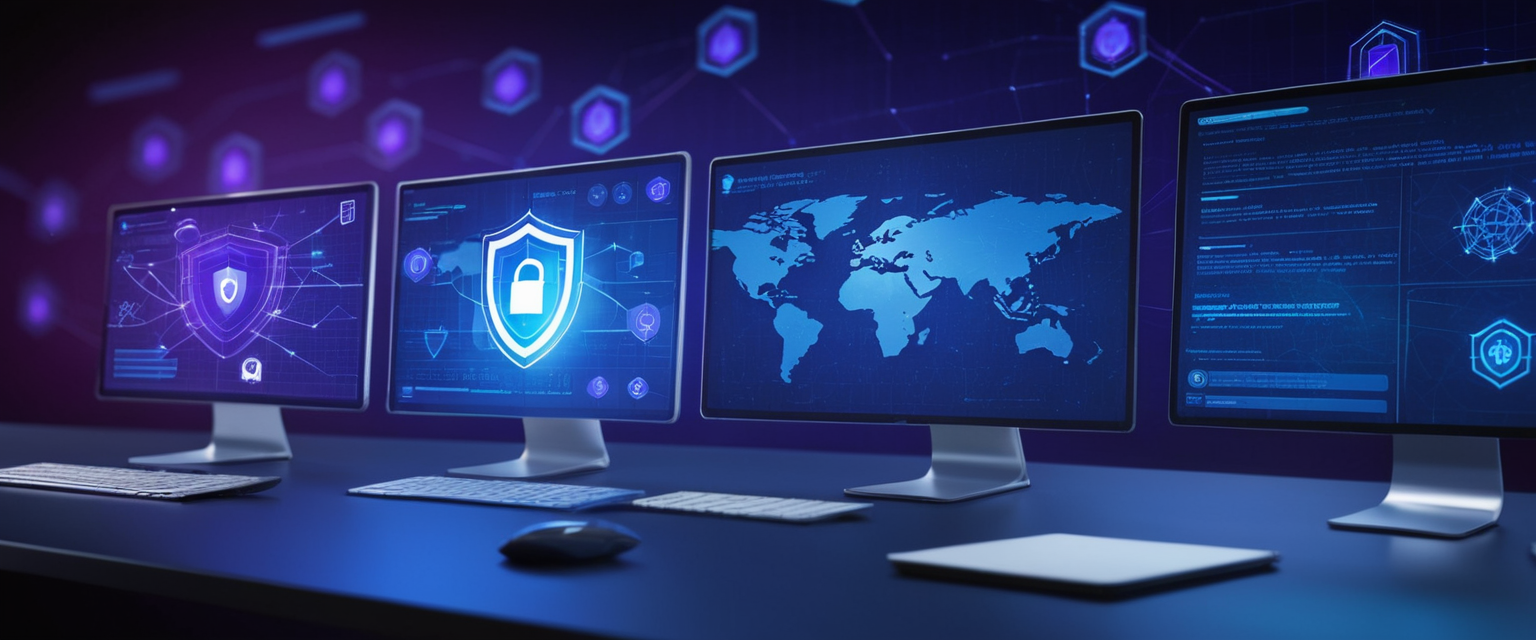
Private browsing, also known as incognito mode or private mode depending on the browser, represents one of the most widely used yet misunderstood privacy features in modern web browsers. While nearly all major browsers now offer some form of private browsing functionality, a significant gap exists between what these modes actually accomplish and what users believe they accomplish. This comprehensive analysis examines the technical mechanisms behind private browsing, explores its genuine capabilities, evaluates its well-documented limitations, and synthesizes research findings about how individuals actually use these features in practice. The central finding across numerous academic studies and industry analyses is that private browsing functions primarily as a local device protection mechanism rather than a tool for achieving anonymity or preventing remote tracking, yet the majority of users hold misconceptions about its protective scope.
Understanding the Fundamental Purpose and Definition of Private Browsing
Private browsing represents a deliberate feature engineered into web browsers to address a specific privacy concern: preventing other users of the same device from accessing browsing history, cookies, and cached data after a browsing session ends. Technically, this mode operates by storing all browsing-related information—including history, cookies, cache files, form data, and temporary files—in the device’s random access memory (RAM) rather than on the permanent hard drive. When the user closes all private browsing windows or tabs, the browser purges this data from RAM, theoretically leaving no persistent traces on the local device. The historical context reveals that Apple’s Safari browser first introduced this feature in April 2005, and the feature subsequently became popularized during 2008 discussions about Internet Explorer 8’s beta versions. Since then, every major browser has adopted similar functionality, though they use different terminology: Google Chrome calls it “Incognito Mode,” Microsoft Edge calls it “InPrivate Browsing,” Mozilla Firefox calls it “Private Browsing,” and Apple Safari calls it “Private Browsing” or “Private Window”.
The primary design goal of private browsing modes is narrowly focused and fundamentally device-centric rather than internet-centric. Browser developers created these modes to address the scenario of shared devices where family members, roommates, colleagues, or guests might sequentially use the same computer, and users wanted to prevent subsequent users from discovering their browsing history through easily accessible browser interface elements. This original purpose remains clearly reflected in how browsers present private browsing to users—when entering private mode, browsers display disclaimer text explaining what local data will not be saved. However, the naming terminology itself has become problematic for user understanding. The term “private” carries powerful semantic implications suggesting comprehensive privacy protection, whereas the actual functionality is much narrower in scope. Research from the University of Chicago examining browser disclosure statements found that even the naming choices influence user misconceptions, with Chrome’s use of the term “Incognito Mode” producing somewhat different user understanding than Firefox’s “Private Browsing” or Safari’s “Private Window”.
Technical Implementation: How Private Browsing Modes Operate at the System Level
The technical execution of private browsing reveals important details about both its capabilities and limitations. When a user initiates a private browsing session, the browser creates a temporary session that operates separately from the main browsing session and the device’s standard user profile data. During this isolated session, the browser implements several specific protective measures on the local device level. Most critically, browsing history is not recorded in the browser’s history database. HTTP cookies—small data packets that websites use to remember users, store login information, and track preferences—are not stored persistently on the device. Site data, including images, HTML files, form submissions, and active login sessions, is deleted when the private session ends. Form information such as previously entered usernames, addresses, or search queries is not saved to the browser’s autofill database. Web cache, which normally stores frequently accessed content to speed up future page loads, is cleared upon session closure.
The mechanism by which this local deletion occurs involves storing all this data in RAM rather than writing it to persistent storage on the hard drive. This approach theoretically ensures that when the private browsing window closes, the data evaporates from active memory and leaves no recoverable artifacts on the hard drive. However, forensic research has demonstrated important nuances in this implementation across different browsers. When examining physical memory dumps, researchers have found evidence of browsing activity even from private sessions, and in certain scenarios, fragments of data can be recovered from hard drive unallocated space or slack space, particularly if the system was not cleanly shut down. Moreover, operating system DNS caches, browser caches maintained by system files, and metadata in file system timestamps can retain evidence of private browsing activity even when the browser itself has properly cleaned its own data stores.
Different browsers implement private browsing with varying levels of sophistication and additional protective features beyond the basic local data deletion. Chrome’s incognito mode blocks third-party cookies by default and provides basic local protection. Firefox’s private browsing mode includes Enhanced Tracking Protection by default, which blocks known trackers and fingerprinters. Brave browser goes further by attempting to prevent browser fingerprinting and includes ad and tracker blocking in private mode. Opera offers integration with a VPN service in private browsing mode. However, all these implementations share the core characteristic that they operate primarily at the device level rather than affecting how external parties perceive or track the user’s online activity.
What Private Browsing Definitively Does Accomplish: Local Device Protection
The specific protections that private browsing reliably provides are significant for the intended purpose but narrower in scope than many users assume. The most straightforward accomplishment is preventing other users of the same device from easily discovering what websites were visited. When a subsequent user opens the browser, they will not see a compiled history list of sites visited in private mode, because private mode does not record this history. This represents a meaningful privacy protection in shared device scenarios such as family computers, library computers, hotel business center computers, or workplace terminals that multiple employees access sequentially. A user can shop for surprise gifts without the gift recipient stumbling upon shopping cart contents if they use the computer afterward. Someone researching sensitive medical conditions or emotionally difficult personal topics can avoid potential embarrassment if a family member borrows their device.
Private browsing prevents websites from automatically returning users to “logged in” states through persistent cookies. This allows a user to simultaneously log into multiple accounts at the same service—such as maintaining both a personal and professional Gmail account active in different private browsing windows—without the browser confusing which account belongs to which session. The cookies that track login status in one private window do not persist when that window closes, so opening a new private window requires fresh login. This functionality proves genuinely useful for people who need to toggle between multiple online identities or accounts for work and personal purposes.
Private browsing prevents your device from accumulating cookies and cached data that slowly build up a record of browsing behavior over weeks and months. Whereas regular browsing gradually fills the browser cache with images, stylesheets, JavaScript files, and other page elements from hundreds of visited websites, creating a semi-permanent record recoverable with forensic tools, private browsing avoids this accumulation. The temporary files stored in RAM are discarded, and the disk cache is not written to during private sessions. This means the device does not build up a historical record of cached webpage components that forensic analysis could use to infer browsing patterns. Additionally, private browsing disables browser extensions by default, preventing installed extensions from tracking activity or collecting data during private sessions. While users can enable specific extensions in private mode, this requires affirmative permission, reducing the risk that tracking extensions inadvertently record private browsing activity.
Private browsing provides a cleaner browsing experience unaffected by previous behavior history. Search engines cannot use previous searches to customize the current search results, meaning users receive more generic, unbiased search results than they would if the search engine could see their full browsing history. Websites cannot use cookies to remember previous visits and personalize content based on browsing history, meaning users see more standardized versions of websites rather than versions optimized to their previous behavior. This can be useful when conducting research on controversial or divisive topics where you want to see what average users see rather than a version customized to your existing viewpoint.

What Private Browsing Does NOT Do: Critical Limitations and User Misconceptions
Understanding what private browsing fails to accomplish proves equally important as understanding what it does accomplish, because the gap between perceived and actual protection represents a significant source of user misunderstanding and potential security vulnerability. The most critical limitation is that private browsing provides no protection whatsoever from tracking by internet service providers. Your ISP sits at the network level between your device and the internet, meaning all traffic passes through their infrastructure regardless of browser mode. The ISP’s routers can see the domains you visit with complete domain-level granularity, and if you access unencrypted HTTP websites (identifiable by the absence of “HTTPS” in the URL), the ISP can potentially see the full URL including search terms and other query parameters. While the ISP cannot see the encrypted content of HTTPS traffic, they can see that you accessed a particular website and for how long. In December 2023, Google settled a $5 billion class action lawsuit that alleged the company had tracked users in incognito mode, acknowledging that despite users’ expectations about private browsing, tracking was occurring.
Private browsing provides no protection from tracking by the websites you visit. When you visit a website, that website can see your internet protocol (IP) address, which reveals your approximate geographic location at a city or neighborhood level. The website logs your visit in its server-side records, creating a permanent record of your activity on that service’s infrastructure rather than on your device. If you log into any account on a website while in private browsing mode, that website maintains its normal ability to track your activities on their service. For example, if you sign into a social media account while browsing privately, that platform’s servers record all your activities just as they would during normal browsing, and private mode provides zero additional protection. Emails you send through a private email account, searches you conduct on a social media platform, videos you watch on a streaming service, or purchases you make on a retail site are all recorded by those services if you are logged in.
Protect Your Digital Life with Activate Security
Get 14 powerful security tools in one comprehensive suite. VPN, antivirus, password manager, dark web monitoring, and more.
Get Protected NowPrivate browsing does not prevent tracking through advanced identification methods beyond cookies. Browser fingerprinting represents a sophisticated tracking technique where companies analyze your browser’s characteristics—including browser version, operating system, screen resolution, installed fonts, browser plugins, and timezone settings—to create a unique digital fingerprint that can identify you even without cookies. While some browsers like Firefox and Brave include fingerprinting protection in private mode, most browsers do not prevent this form of tracking. Websites can also track you through methods like DNS cache-based tracking, where they place unique identifiers in your device’s DNS cache that persist across private browsing sessions. Researchers have demonstrated that this DNS-based tracking method can identify users across private and normal browsing modes and even across different browsers on the same device.
Private browsing does not protect you from network-level monitoring by workplace networks, school networks, or home networks. Network administrators can configure their routers and monitoring software to log all domains accessed by devices connecting to their network. This applies whether you are using private browsing or not, because the blocking occurs at the network layer upstream from your device. Employers who provide devices often install software that monitors browsing activity, and this monitoring can still see private browsing activity on company networks. Similarly, school networks with monitoring software can observe student browsing even in private mode. Home network owners who have configured their routers to log activity can see what websites all household members visit.
Private browsing provides no protection against malware, viruses, phishing, or other security threats. The private browsing mode is entirely orthogonal to security protections—it does not encrypt your data, it does not protect against malicious websites, and it does not prevent drive-by downloads of malicious code. If your device has malware installed, that malicious software can observe your private browsing activity just as readily as it observes normal browsing. If you click on a phishing link in private mode, you are just as vulnerable to credential theft or compromise as you would be in normal mode.
User Misconceptions and the Gap Between Expectation and Reality
Academic research has systematically documented the substantial gap between what users believe private browsing accomplishes and what it actually accomplishes, revealing important patterns in how privacy features are understood. A 2018 study from the University of Chicago surveying 460 internet users found that the majority of participants held incorrect beliefs about private browsing protections. More than half of participants believed that private browsing prevented ISP tracking, when in fact ISPs can still see exactly which websites are visited. More than half believed that their search history would not be logged by Google even if they were logged into their Google account while browsing privately, when in fact Google records searches for logged-in users. Approximately 27 percent of participants incorrectly believed that private browsing offered protection against viruses and malware.
The research also examined how browser disclosure statements affected user understanding. The study tested thirteen different disclosure statements from various browsers in their desktop and mobile versions, including statements from Chrome, Edge, Firefox, Safari, Opera, and Brave. Most disclosure statements failed to significantly improve user understanding beyond a control condition with a vague statement. Only Chrome’s disclosure statements, which used a clear two-column format listing what incognito mode does and does not do with specific bullet points, produced significantly more correct responses. This finding suggests that even when browsers attempt to inform users about limitations, the messaging often fails to reach comprehension. The study noted that the terminology itself influenced understanding—the use of the word “private” carries such strong implications of comprehensive privacy protection that it appears to override the more limited technical explanations.
A separate research effort surveying actual private browsing usage found similarly concerning misunderstandings about the mode’s purpose. When researchers asked users who they were “hiding from” when using private browsing, 53 percent responded that they were trying to hide from the websites they visit. However, private browsing cannot accomplish this goal, as websites can still see all activity from logged-in users. Only 42 percent of respondents correctly identified the intended purpose of private browsing—preventing a trace on the local device that other users could discover. This represents a serious misalignment between the actual protections offered and user expectations about protection.
Survey research on actual usage patterns found that approximately 48 percent of respondents declined to answer questions about why they use private browsing, citing embarrassment. Among those who did answer, 37 percent indicated they use private browsing to search for specific content they do not want in their history and not part of personalized search results. Eighteen percent stated their primary use is online shopping. Other common uses included accessing sensitive or embarrassing sites, researching controversial topics, managing multiple accounts, and trying to prevent dynamic pricing based on browsing history. However, research examining actual browsing behavior found important discrepancies between reported usage and observed usage. Domains categorized as adult content constituted a larger percentage of sites visited in private browsing than in normal browsing, and users conducted searches about sensitive topics and watched age-restricted content more frequently in private mode. This suggests users underreport their private browsing motivations, likely due to social desirability bias.
Practical Real-World Applications and Appropriate Use Cases
Despite its limitations, private browsing does serve legitimate purposes in appropriate scenarios where its actual capabilities align with user needs. Using private browsing on a shared computer at a library, hotel, internet café, or other public location prevents the next user from discovering browsing history or leftover login sessions. This represents the original intended purpose and remains a genuine privacy value. When using such public computers, private browsing ensures that your session data is not left behind for potentially malicious actors to exploit. Someone accessing their email, bank account, or other sensitive accounts on a public computer can use private browsing to avoid leaving authentication cookies or cached information that could be misused.
On personal devices, private browsing serves useful purposes for specific situations. Shopping online for surprise gifts, while not protected from website tracking or ISP observation, at least prevents the browser from storing shopping history that might be inadvertently discovered by someone with physical access to your device. Similarly, researching sensitive medical topics or accessing mental health resources in private mode prevents search history from accumulating on the device where others might discover it. Managing multiple online accounts simultaneously requires private browsing sessions to maintain separate login states for each account without browser confusion. These scenarios represent appropriate alignment between private browsing’s actual capabilities and user needs.
Private browsing can also serve legitimate testing and development purposes. Web developers use private browsing to test how websites appear to first-time visitors without personalization based on previous activity, allowing them to verify that default website configurations function correctly. Researchers and content creators might use private browsing to view web pages in their default, non-customized state to understand what the average user experiences. These technical use cases align appropriately with private browsing’s actual function.

Browser-Specific Variations and Enhanced Privacy Features
While all major browsers implement basic private browsing functionality that prevents local data storage, several browsers have added additional features that go beyond basic private mode implementation to provide enhanced protections. Firefox integrates tracking protection into private browsing mode by default, blocking known trackers, fingerprinters, and cryptominers. When users enable Firefox’s Enhanced Tracking Protection setting and enable private browsing, the browser blocks third-party cookies that are commonly used for cross-site tracking. Firefox’s Multi-Account Containers extension allows users to open multiple tabs with isolated cookie jars for different purposes—personal, work, shopping, and so forth—preventing trackers from associating these activities together. However, Firefox still does not encrypt traffic or hide the user’s IP address in private mode.
Brave browser integrates privacy and fingerprinting protection as core browser functions rather than just in private mode, but it emphasizes these features in private windows as well. Brave blocks ads and trackers by default and attempts to randomize browser fingerprinting characteristics to make the browser profile less unique and thus harder to track. However, even Brave’s enhanced private mode does not encrypt traffic or hide IP addresses. Opera browser integrates a built-in VPN service with its private browsing mode, which does encrypt traffic and mask the user’s IP address. This represents a more substantial enhancement to privacy, though it requires trusting Opera’s VPN service infrastructure.
Chrome’s basic incognito mode blocks third-party cookies by default but does not integrate additional tracking protections. Safari’s private browsing provides basic local data protection and includes Intelligent Tracking Prevention (ITP) to prevent some forms of cross-site tracking through cookies. However, all these browser variations maintain the fundamental limitation that they operate primarily at the local device level and do not provide protection from ISP tracking, website tracking, or network monitoring.
The Critical Distinction Between Private and Anonymous Browsing
Understanding the difference between private browsing and truly anonymous browsing represents crucial knowledge for anyone seeking comprehensive online privacy protection. Private browsing, as discussed throughout this analysis, primarily protects local device data from other device users. Anonymous browsing refers to using tools and services that hide the user’s identity and make it difficult or impossible to link online activity to the user. These are fundamentally different categories of privacy protection.
Virtual Private Networks (VPNs) represent one approach to anonymous browsing by encrypting all internet traffic and routing it through remote servers, making it appear as though the user is browsing from the VPN server’s location. When used properly, a VPN prevents the ISP from seeing the websites visited, prevents websites from seeing the user’s real IP address and geographic location, and encrypts all data in transit between the user’s device and the VPN server. However, the VPN provider itself can see all traffic, so users must trust the VPN service’s privacy policies and logging practices. Additionally, VPNs do not provide protection against malware or phishing, and users logging into accounts on websites while using a VPN can still be tracked by those services.
The Tor browser offers more robust anonymity by routing traffic through multiple volunteer-operated servers globally, such that no single entity can associate the traffic with the user’s real IP address. Tor Browser deletes all cookies when closed and provides protections against fingerprinting, making it significantly more difficult to track users across sessions. However, Tor also has limitations—it is substantially slower than regular browsing due to the multiple hops, many websites detect and block Tor traffic, and the final exit node can theoretically see unencrypted traffic.
The crucial point is that private browsing and anonymous browsing serve different purposes and address different threat models. Private browsing protects against local device discovery by household members or subsequent users. Truly anonymous browsing protects against remote tracking by ISPs, websites, and network administrators. A user who wants complete privacy from their ISP and websites must use anonymous browsing tools like VPNs or Tor, not merely private browsing mode.
Forensic Recovery and the Technical Reality of Data Persistence
While private browsing modes are designed to leave no traces on the local device, forensic research has demonstrated that data recovery from private browsing sessions is often possible under certain conditions, revealing important nuances about the extent of protection actually provided. When the browser closes normally and the system continues running, browsers generally succeed in properly clearing browsing data from RAM. However, if the system is powered down before the RAM is cleared, or if the computer crashes during a private browsing session, the data can remain in RAM and be recoverable through forensic memory imaging techniques.
Research on Internet Explorer 10’s InPrivate browsing mode found that over 80 percent of browsing evidence was recoverable from non-database areas including pagefile.sys and system volume information directories even after closing private browsing windows. Similar findings emerged for Safari’s private browsing mode, where browser crashes during private sessions left evidence that persisted in the browser’s database. Firefox’s private browsing implementation showed somewhat better data deletion, but forensic researchers still recovered evidence from unallocated disk space and memory artifacts when using specialized recovery tools. Google Chrome’s implementation generally performed better, with the least recovery of private browsing artifacts, though some recovery was still possible under certain circumstances. When Edge was tested, files created during private browsing remained recoverable even after closing the private window, suggesting incomplete implementation of intended data deletion.
More recent research examining portable browser versions and memory analysis found that despite claims of privacy protection, multiple browsers retained significant information including visited URLs, keywords, and website thumbnails in recoverable locations. The research emphasized that some temporary files remained even after cache clearing, memory dumps, and system restarts when examining portable browser installations. Additionally, DNS cache entries remain even after browsers are closed because the DNS cache is maintained by the operating system rather than the browser, and these entries can be recovered through system tools. Websites could potentially abuse DNS cache-based tracking to identify users across private and normal browsing sessions by placing unique DNS records in the client’s DNS cache.
These forensic findings important caveat: while technical methods can recover evidence of private browsing, such recovery typically requires either sophisticated forensic tools and expertise, physical access to the device, or a system failure that prevented normal data deletion. The average person with shared access to a computer cannot simply view a browser menu and discover private browsing history. The forensic vulnerabilities matter primarily in contexts where law enforcement or sophisticated attackers have physical access to devices and technical expertise. For the intended purpose of preventing casual discovery by household members or subsequent device users, private browsing generally succeeds in its goals.
The Reality of Private Browsing
Private browsing represents a genuinely useful feature for specific, well-defined purposes within its actual scope of capabilities, but it fundamentally fails to provide the comprehensive privacy protection that many users expect. The feature successfully accomplishes its original design objective of preventing other users of the same device from easily discovering browsing history, cookies, and login sessions. It provides meaningful protection in shared device scenarios such as public computers, family computers, and workplace terminals. It enables practical functionality like managing multiple accounts and conducting searches free from previous browsing history influence. These remain legitimate values that justify the feature’s continued use for appropriate scenarios.
However, private browsing definitively does not accomplish what the majority of users believe it accomplishes. It does not prevent ISP tracking, website tracking, network monitoring by employers or schools, or government surveillance. It does not anonymize your internet presence or make your activity invisible to remote parties. It does not protect against malware, phishing, or other security threats. The persistent gap between user expectations and actual capabilities represents a significant privacy vulnerability, because users may engage in sensitive activities believing themselves to be protected when they are actually exposed to tracking and monitoring.
For users seeking genuine privacy from ISP tracking and website tracking, the evidence strongly indicates that private browsing alone is insufficient. Combination approaches prove necessary, such as using private browsing mode alongside a trustworthy VPN service to encrypt traffic and mask IP addresses, while understanding that VPN providers can still see activity and users must trust the provider. For users seeking robust anonymity even from their VPN provider, Tor Browser provides stronger protections through its multi-hop routing architecture, though with performance tradeoffs. Additionally, using browsers with strong tracking protections like Firefox with Enhanced Tracking Protection enabled provides better defense against fingerprinting and cross-site tracking than basic private browsing offers.
For maximizing privacy in shared device scenarios where private browsing is genuinely useful, users should supplement it with device-level security practices such as setting strong passwords, using OS-level user accounts to completely separate different device users, and enabling full-disk encryption so that even if someone physically accesses the device, they cannot recover deleted private browsing data. Users should also understand that private browsing, despite its name, is fundamentally a convenience feature rather than a comprehensive privacy solution, and the responsibility for protecting online privacy extends beyond browser features to include informed decision-making about what sensitive activities require additional protective tools like VPNs.
Browser developers bear responsibility for communicating clearly about private browsing limitations, as research demonstrates that current disclosure statements fail to effectively convey what private browsing does and does not protect. The terminology itself deserves reconsideration—calling this mode “local-history-private mode” or something similarly explicit would more accurately convey its actual function than the misleading term “private browsing”. Greater transparency and clearer communication would help align user expectations with technical reality, reducing the population of users unknowingly exposing sensitive activities to ISP tracking and website monitoring in the false belief that private browsing mode provides protection.






